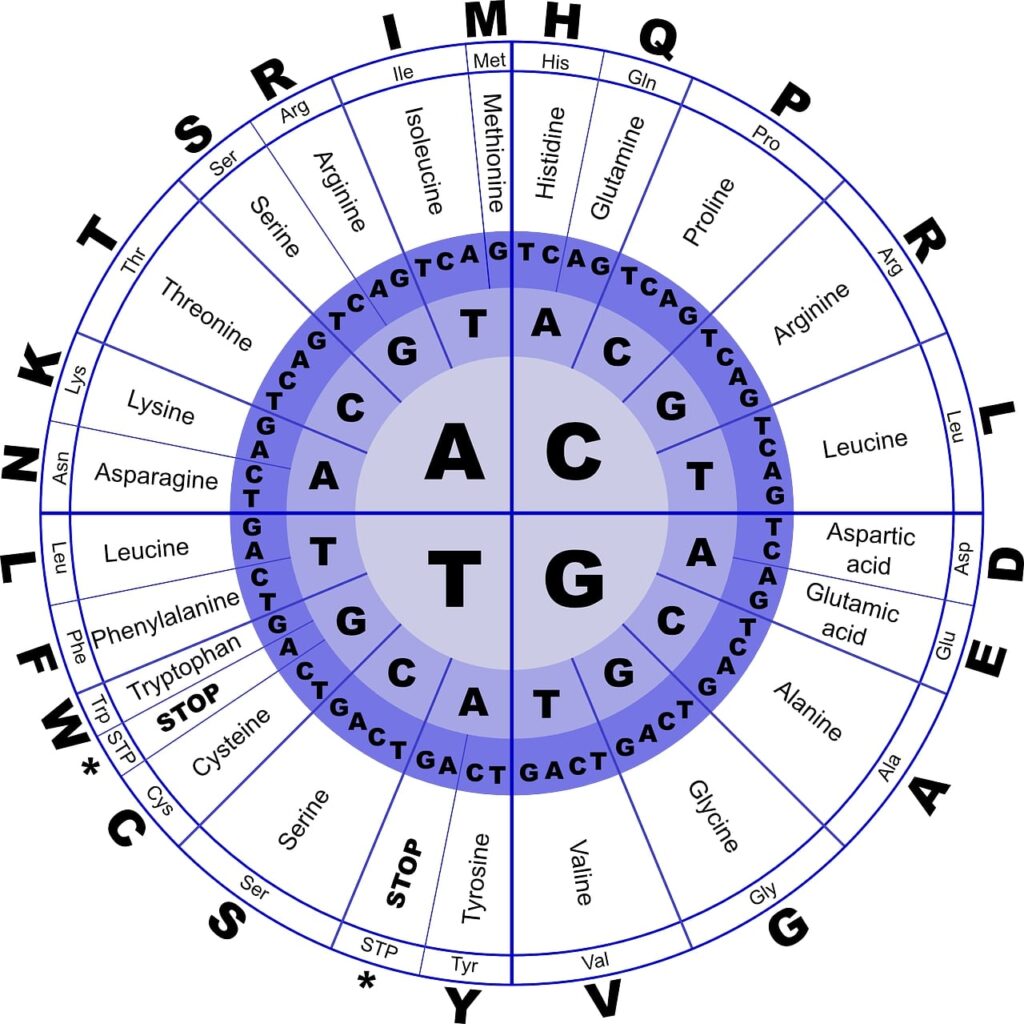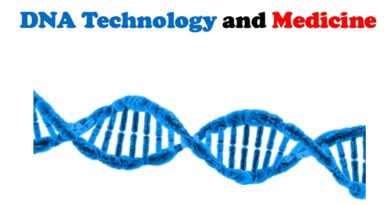What is DNA
Deoxyribonucleic acid (DNA) is a molecule that contains the genetic instructions used in the development and functioning of all known living organisms.
DNA molecules are two strands coiled together to form a double-stranded helix. The two strands are complementary, meaning one strand has nucleotide sequences that complement those on the other.
This ensures that one strand can be read by providing direction via 3′-5′ exonuclease activity to complement nucleotides on its partner strand, resulting in an accurate reading of one DNA molecule by another.
What makes the Human Genome so Important and Unique?
The Human Genome is the blueprint of who we are and what makes us unique. It is a map that tells us how our cells are organized, the proteins we produce, and the genes that make up our DNA.
The Human Genome Project has been a breakthrough in science since first discovered in 1984.
The Human Genome Project is an international scientific research project to determine the sequence of nucleotides that make up human DNA.
This project aimed to identify all three billion base pairs in humans’ genetic code and then use this information to understand why humans have evolved differently from other animals and how they might evolve into new species.
DNA Structure and Function
The human body is a cell responsible for carrying out various functions. These cells carry out these functions through DNA, a sequence of nucleotide bases. The series of these nucleotide bases determines the body’s part and type of cell.
DNA Structure & Components
DNA comprises four components: nucleotides, bases, strands, and helix. The nucleotides are composed of a nitrogenous base combined with sugar. They are found in every living cell and act as the building blocks that make up the DNA molecule.
The bases are found in pairs, and they form hydrogen bonds between each other. Each pair of bases is called a base pair. There are four bases – adenine, thymine, guanine, and cytosine – with A-T-G being the most common combinations in DNA worldwide.

DNA Synthesis & Replication
DNA is the genetic information that contains all the instructions for a living thing. Replication is when cells divide and duplicate their DNA to produce two new identical DNA molecules.
The replication process can be done in many ways, but the most common way is by using cellular division and mitosis. The following are other ways: meiosis, plasmid transduction, and transgenic transformation.
DNA synthesis & replication is an important topic because it helps us understand how life works at a molecular level.
Replication was first discovered by Johann Martin Schleiden and Theodor Schwann in 1839. By the 1830s, they had observed that some plant cells bore a dark spot on one part of their membrane, which they termed “mother cells.”
These cells would divide themselves to provide a complete copy of the mother cell’s genetic information. This eventually led to their discovery that cells divide by the process of cell division and the development of cell theory.
DNA Function
The DNA in your body does not change throughout your lifetime; it only changes when you have an injury or illness to your body. This makes it possible for scientists and forensic experts to study and identify DNA from a crime scene.
DNA Testing
DNA testing is a way to identify the biological father of a child. In the past, it was used for criminal investigations and paternity disputes. However, DNA testing is used for many other purposes, such as in-vitro fertilization, genealogical, and medical research.
DNA testing has many different uses in society today. For example, genealogical research or medical research can help people identify their biological parents or relatives. It can also be used in criminal investigations and paternity disputes.
DNA Transcription & Translation
DNA is a long polymer of nucleotides composed of four molecules: adenine, guanine, cytosine, and thymine. It is transcribed by RNA polymerase into a complementary strand of DNA known as messenger RNA. This process is called transcription.
Transcription begins with forming an initiation complex containing an enzyme called RNA polymerase and a GTP molecule. The initiation complex binds to the promoter sequence on the gene and starts the transcription process.
DNA Mutation and Disease
Somatic cell mutation is a type of genetic mutation that changes the DNA of somatic cells. It is mostly caused by environmental factors like radiation, chemicals, and smoking. Clinical Geneticists conduct tests and study all these data.
Somatic cell mutations are responsible for many diseases like cancer, autoimmune disorders, and neurodegenerative diseases. Mutations in somatic cells are different from germline mutations.
In germline mutations, the mutation is passed to children before birth and affects their chromosomes in the egg or sperm. This can cause genetic diseases like cleidocranial dysplasia, hemophilia, and cystic fibrosis.
The somatic cells of the human body are made of the same DNA as a person’s germline cells, but the mutations in somatic cells happen in that part of their DNA that is not passed to children.
Causes of Mutation
Radiation, chemicals, and smoking can cause these mutations because they can damage parts of the genome. The cell will then have more errors, and the cell’s DNA will have more mutations.
Genome-wide association studies (GWAS) are large-scale genetic studies that look for associations between certain traits and diseases and genetic variants across the whole genome.
They find evidence of somatic mutations that can contribute to disease development in humans and animals. Examples of somatic mutation causing diseases
Somatic mutations are the sudden changes in genes that happen when a cell or organism is exposed to radiation, chemicals, or other environments that are not usually part of its normal environment.
Somatic mutations can result in diseases such as leukemia, cancer, and skin conditions.
DNA Sequencing – How the Technology is Changing Healthcare and Biotech
DNA sequencing is a technique that allows scientists to read an organism’s DNA and identify the sequence of its genes. The technology has been used in healthcare and biotech for many purposes, such as diagnosis, treatment, and research.
DNA technology has led to many changes in healthcare and biotech. In the future, it will be used for personalized medicine where we can tailor our treatments based on our genetic background.
But on the other hand, it will also help us understand how diseases are caused and spread. DNA technology has closely linked with medicines as well.
How Your Genes Determine Your Personality Type
To understand your personality type, you need to know what your genes say about it. The following is a briefly overview of the most important gene variants associated with different personality types.
1)- The first gene variant
It has been identified as the serotonin transporter gene. This variant is associated with an individual’s ability to handle stress and anxiety. Individuals with this variant are more likely to be introverted and neurotic than those without it.
2)- The second gene variant
It has been identified as the dopamine receptor D4 gene. This variant is associated with an individual’s temperament and emotional response to their environment.
Individuals with this variant tend to be extroverted, emotionally stable, and less anxious than those without it.
3)-.The third gene variant
It has been identified as the monoamine oxidase A gene. This variant is associated with an individual’s temperament and emotional response to their environment.
Individuals with this variant tend to be introverted, emotionally unstable, and more anxious than those without it.
4)- The fourth gene variant
It has been identified as the dopamine D4 receptor gene. This variant is associated with an individual’s temperament and emotional response to their environment.
Individuals with this variant tend to be extroverted, emotionally stable, and more anxiety-prone than those without it. There is a genetic component for many disorders such as depression and alcoholism.
How Does DNA Protect Us?
DNA is the genetic code that contains the instructions for building and running a living organism. It comprises four nucleotides: adenine, cytosine, guanine, and thymine.
The human genome has about 3 billion base pairs in it. Each base pair has a nucleotide that carries a specific chemical group called a base pair. The two strands of DNA are connected by hydrogen bonds between complementary bases on the two strands.
It provides an efficient way for cells to pass on their genetic information to their offspring and repair any damage from external factors such as UV radiation or toxins.
DNA Tests for Ancestry & Family History
DNA tests for ancestry and family history are becoming more popular. There are many DNA tests, but the most common ones are autosomal and mitochondrial.
Autosomal DNA tests look at your entire genome and can be used to determine your ethnicity, geographic origin, or relationship to other people. Mitochondrial DNA tests look at a person’s maternal lineage only and can be used to determine relationships between generations.
For example, a person’s autosomal DNA test may report that they are 84% European and 6% African, whereas the mitochondrial test results suggest otherwise. It is possible to have similar reports from either type of test.
Conclusion
DNA is a polymer that contains the genetic instructions used to develop and function all known living organisms.
DNA comprises two strands coiled around each other to form a double helix. These two strands are connected by hydrogen bonds between complementary bases on one strand and its neighbor.
The human genome comprises three billion chemical base pairs that make up the double helix structure.
These base pairs are arranged in a specific order: adenine, guanine, thymine, cytosine, and uracil. This order gives instructions on how the body should function. The sequence of these bases is called the genetic code.
Related Posts
3)- 10 Things You Didn’t Know About DNA
4)- Which Career Combines DNA Technology and Agriculture?
5)- Which Career Combines DNA Technology and Medicine?
6)- Which Career Combines DNA Technology and Forensics




